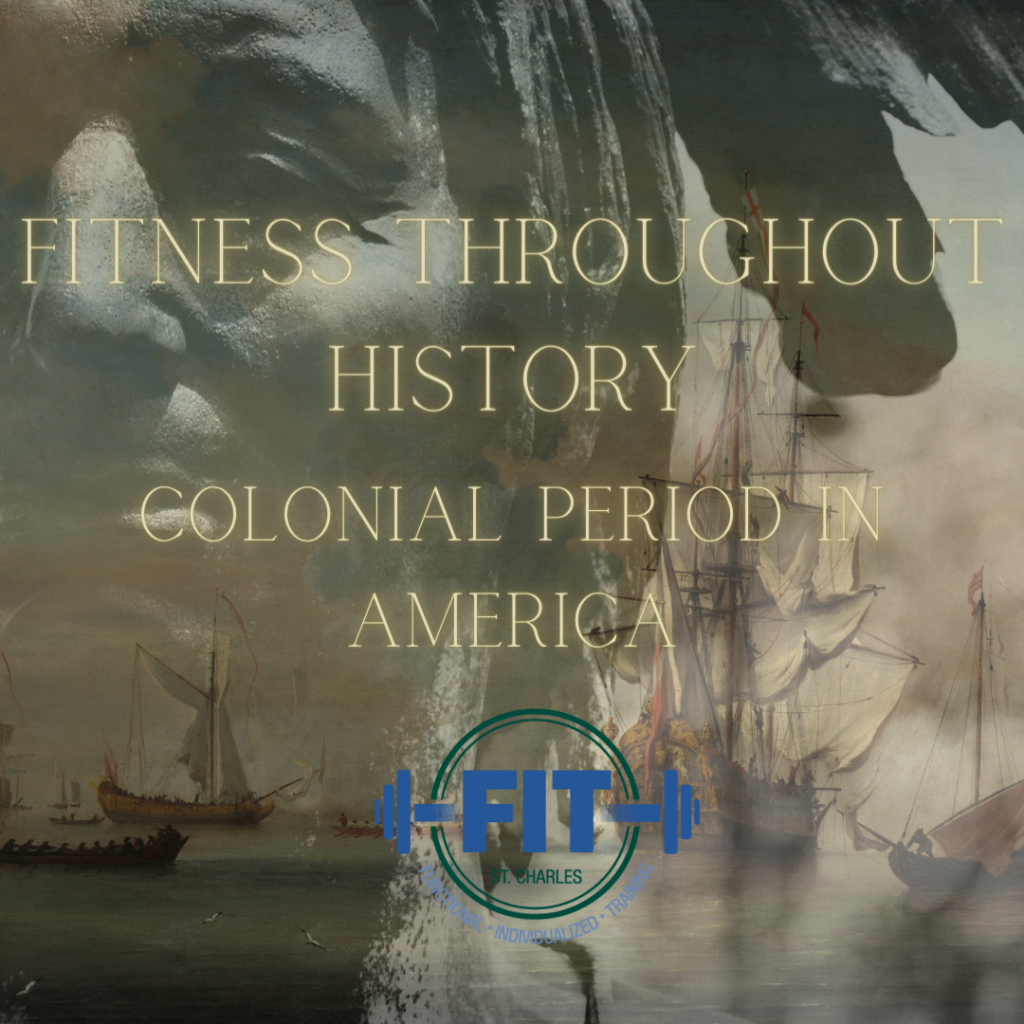
Welcome back to our series on the History of Fitness! This week we will discuss fitness in the American Colonial Period (1700-1776)!
Colonial life was not easy. There were many hardships that immigrated Europeans faced, as the urban lifestyle they led in Euope was not yet established in North America. Because of this, physical fitness was yet again a necessity, and no real organized exercise or fitness programs existed. Lifestyles consisted of herding cattle, farming, and hunting for food. Due to the high level of physical activity needed to survive, settlers remained physically fit despite their removal from the wave of fitness programs that had begun to spread across Europe at the time.
However, it is paramount to note that there was much more going on in America than just colonization. Native Americans were being pushed out of their land by force and disease the longer that Europeans continued to immigrate. Smallpox, for example, is estimated to have killed roughly 90% of the Native American population that Europeans came in contact with, which made it almost impossible for them to effectively fight back against European settlers. This began a long, dark history of the treatment of Native American people. There is a lot to say about our treatment then, and all the way up to present day, of Native American people, but because we are focusing primarily on fitness around this time period, we will not delve too deep into this topic. Instead, let’s look at how Native Americans lived prior to colonization, and how that affected physical fitness among their many tribes.
Prior to European colonization, Native American tribes had varied ways of life (over 600 tribes with varying dialects and cultures existed in North America north of the Rio Grande), and all of them consisted of high levels of physical fitness. Culture, climate, and location created a huge diversity in the daily lives of Native Americans. Many tribes, particularly those that inhabited the Great Plains, remained nomadic for longer than tribes centered around the South East and South West, who had more established urban centers. Due to their nomadic lifestyle, survival depended on being able to walk long distances, hunt effectively, and defend themselves against neighboring tribes. Because of this, high levels of physical fitness was desired and maintained throughout the varying cultures in the Great Plains.
Many tribes in the South East settled into established urban centers sooner than Tribes in the Great Plains. Because of this, they were able to rely more on agriculture and less on a hunter-gatherer lifestyle, however, they remained very physically active, especially compared to today’s standards.
In the South West, Native tribes developed irrigation, which allowed for a less nomadic lifestyle, as well as complex cities and trade between nations. Some of these cities and irrigation systems can still be seen in areas such as Arizona, New Mexico, and Texas. Although this did lead to a more “sedentary” lifestyle, physical fitness was still a desired trait. Large scale trading between nations meant more walking, and later horseback riding, and although agricultural farming was certainly less time consuming than nomadically hunting and gathering, it was still much more physically taxing than the lifestyle we lead today.
This barely touches the iceberg of the variety of lifestyles that Native Americans lived before and during this time period. But one thing seems certain, survival depended on the ability to farm, hunt, build, and trade within tribes, leading most, if not all, Native American tribes to lead a physically fit lifestyle.
